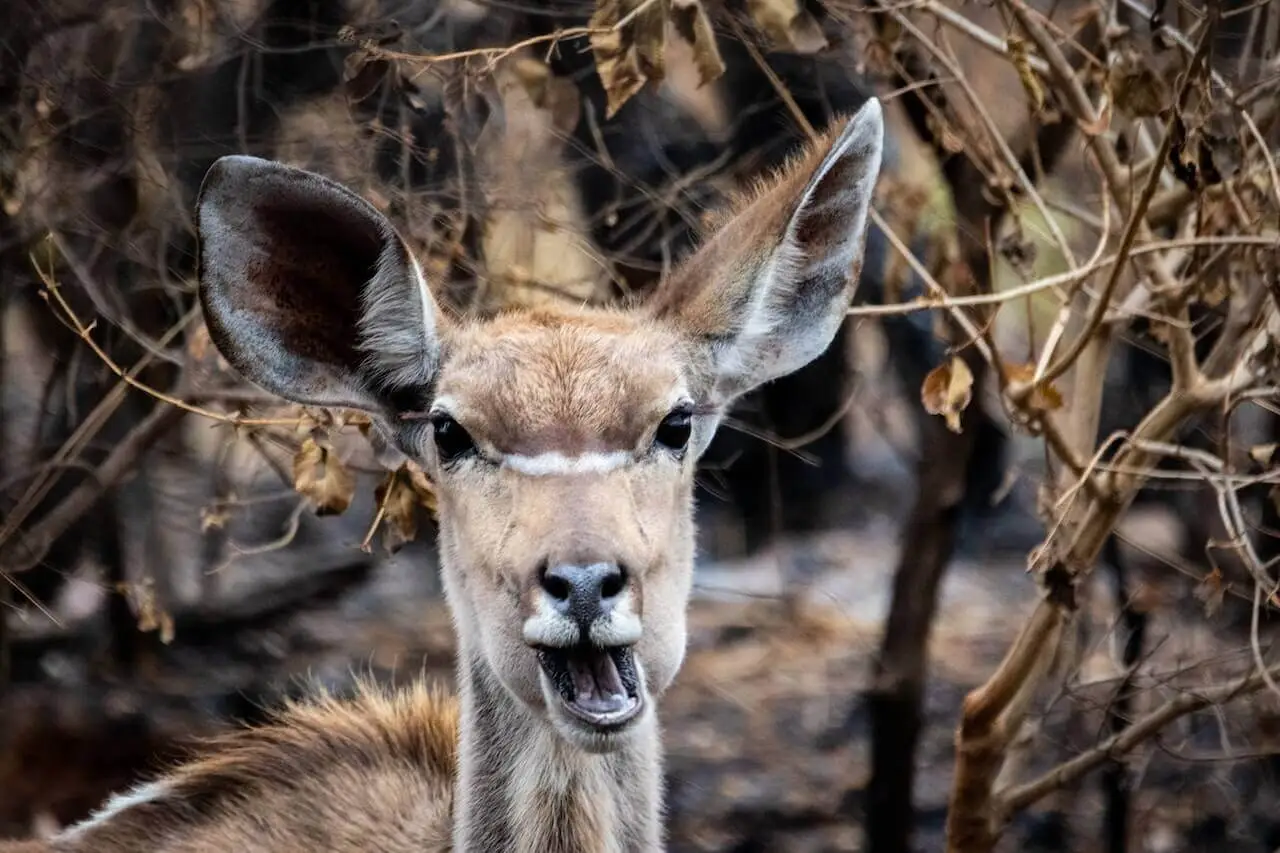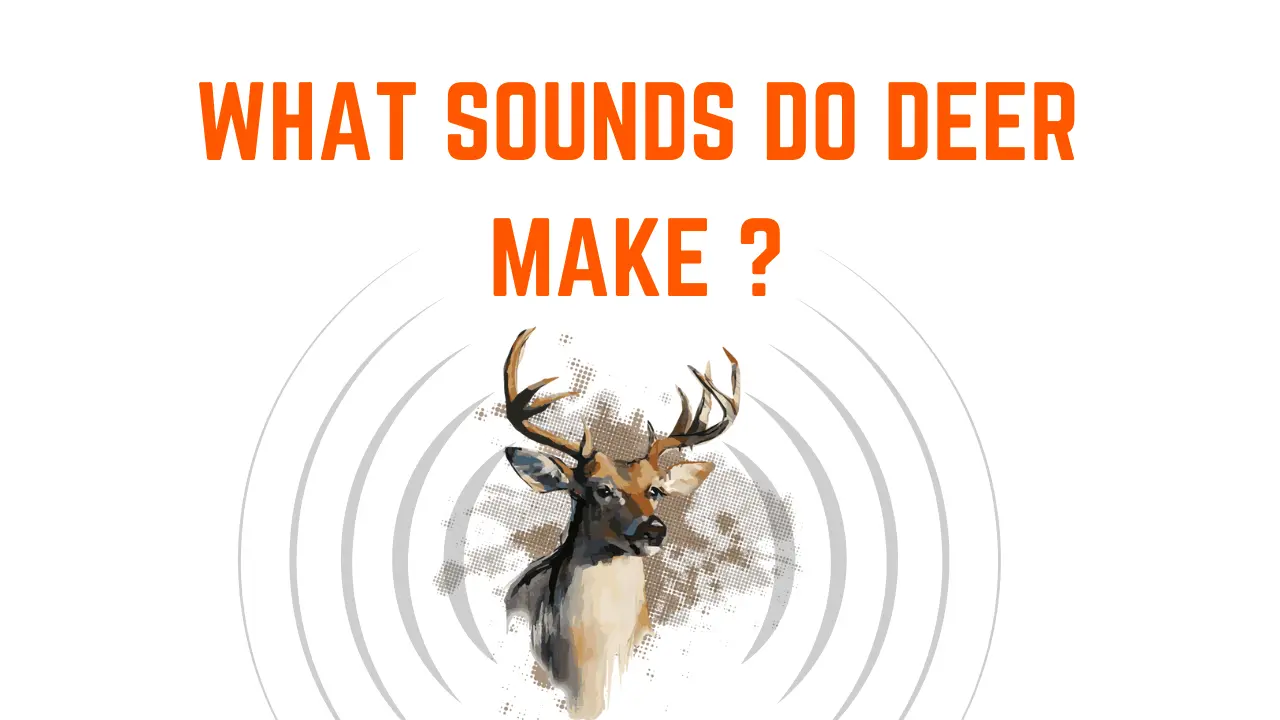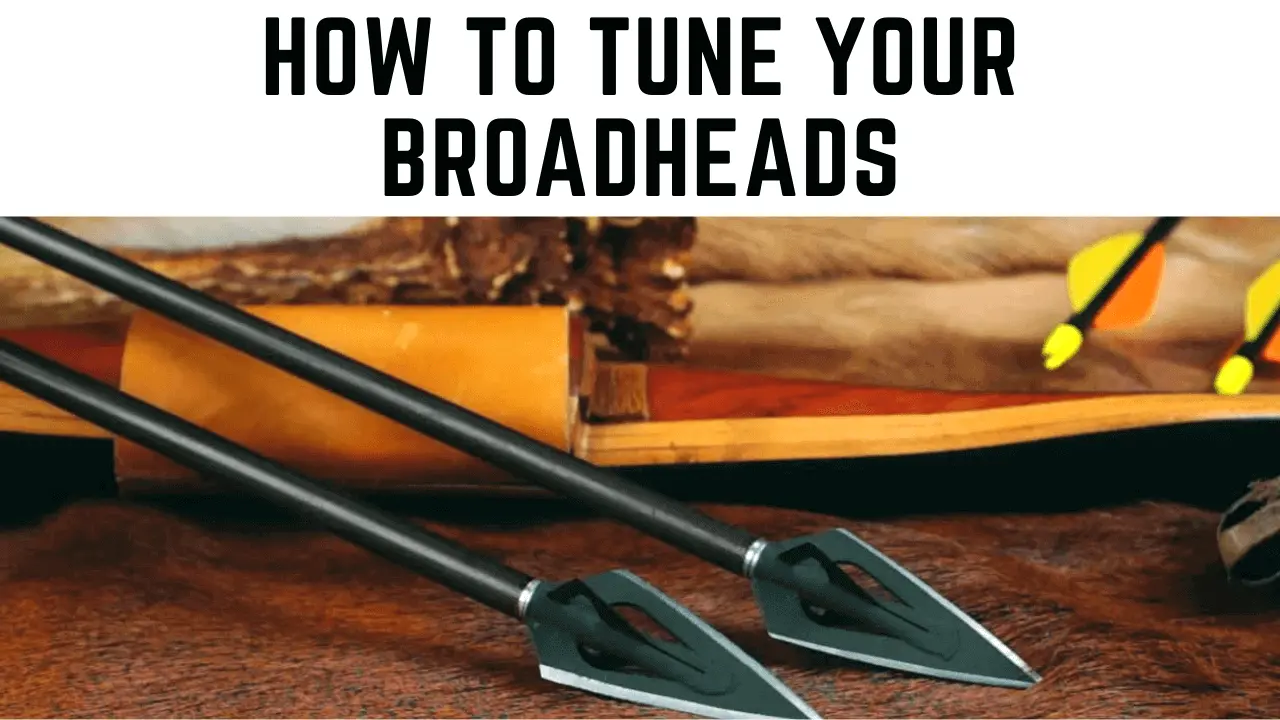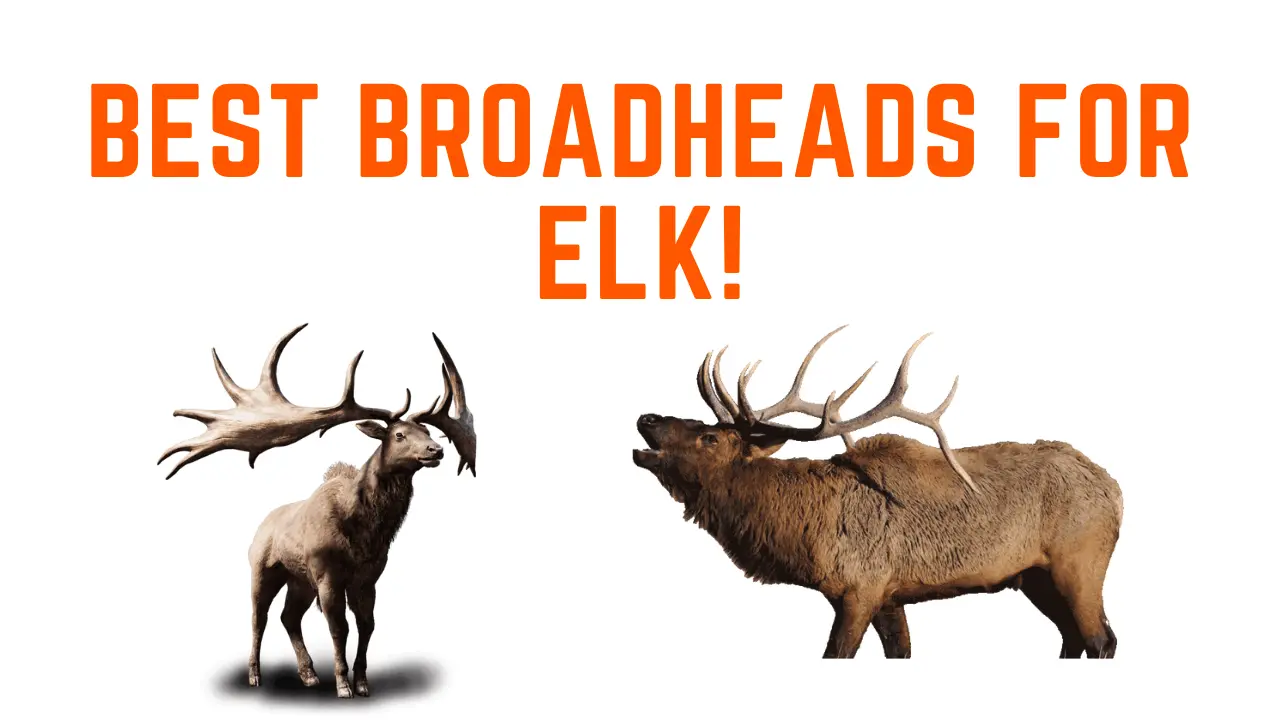What Sound Does a Deer Make: Common Deer Sounds You Should Know
Walking through a forest, you’ll hear swishing leaves and fizzling branches underneath your feet. Suddenly, a strange noise comes from the trees – the deer’s profound, gravelly noise. But what does it mean?
In this article, we’ll explore the different deer sounds. We’ll decode the language of these incredible creatures and reveal the secrets of their various noises.
So, Let’s dive in!
Deers are loud animals. Their sound is a means of communicating and expressing their behavior and sentiments. Moreover, they have a range of noises, and each noise indicates some meaning which contributes to the social behavior of deer. Due to the loud noise, a hunter in the forest feels like deers surround him. You must learn some of these sounds if you are a new hunter.
Grunting
It sounds like ‘urp’.
It is a loud, deep, and guttural noise deer makes to show their aggression and supremacy. Deer grunt to warn their herd about danger and declare dominance. The grunting patterns of deer vary with their age, gender, and social status.
Deer’s grunting is also a sound of curiosity and peculiarity. Rutting bucks grunt deeper and throatier to attract their partners. Moreover, male deers also use grunts to uplift their fawns to follow them or to show their presence to other deers. In a nutshell, grunting is an integral part of communication and an excellent way to convey information among the deers because of two reasons:
- Show their dominance.
- Tell the partner that he is getting ready to tend.
Bleating
Bleating means, ‘Here, I am!.’
This noise has a high pitch and vibration with pauses between it which resembles the sound of a goat. It is a clang often used by deers as a medium to call one to the other. It may be the sound of the urge of another deer to make him come to the calling deer, or it may be to let the other deer know about the location of the calling deer. The primary purpose of this call is to keep their family groups together. However, the mother deer also bleats to find its child. Bucks often make this noise when in danger or suffering in pain.
Snorting
It is an alarm signal.
It is a single, short incendiary sound heard when the deer is about to run. Snorting produces a sound of ‘whoosh.’ The main reason behind the snorting whisper of the deer is annoyance, anger, and danger. Bucks often make this sound when they are over the same dependency.
Deers also snort as a response to smell, sight, or sound that alarms them.
While snorting, deers stamp their feet and flick their tails. Snorting is the signal to hunters that they’ve been smelled or sighted by the deer. This noise also helps other deer to be aware of the danger. Studies have found that doe snorts more than bucks.
There are two types of snorts:
- The first one is booming and a single sound. The deer gives an explosive snort before its flight. It is produced when the deers come across danger.
- The second is a long snort with a tail flick and a foot stamp. It is produced when the danger is safe from the deer.
Stomping
It is a sound to alert the herd.
A stomp sounds like a piece of wood hitting the ground. It is not a sign of anger. Deer stomp their hooves when they feel or see something harmful to them, but they still want to confirm it. It is the loud warning sound that reverberates through the ground. They stomp their hooves to show they are ready and alert to face danger. This noise alerts the rest of the herd so they know if the threat is present. They usually snort when they feel that the risk is not very far.
Barking
Deers make a bark-like sound whenever they encounter any danger. Sometimes, they also bark to identify their location. However, whitetail deers produce various noises to communicate and alert other deers in that area about any harm or threat. These vocalizations, like grunting, bleating, and snorting, often sound like barking to other people.
The barking deer is usually called Indian Muntjac or Kakar. The barking is a unique tone of muntjac deer. The barking of deer is mainly heard at night when they are more prone to danger.
Screaming
Screaming is the signal of immediate panic.
It is a highly high-pitched, powerful, sinister, and evocative rhythm that sounds like the scream of a human, usually made when the animal is injured or if there is any starling moment. It is most likely the alarm or warning signal. They often make this sound as an expression of fear or when they are in a state of distress or injury. Moreover, cream intensity depends upon age, gender, and situation.
Sniffing
The sniffing sounds like much air is being sucked into the deer’s large nose. It is a solid and deep noise. Whitetail deer’s sniff is more potent than human sniffs, and they sniff when they detect any change in their environment or are curious about it. They often make this noise when they see any food source or find their partner for mating.
Deers have an excellent sense of smell used to sense danger. However, they sniff when they recognize the humans that have hunted them. The sniff of the deer resembles the human sniff, but the deer’s sniff is a little stronger.
Sparring
Sparring is a noise that bucks make after shedding their velvet. The male deer can assert dominance to see who’s the better slugger.
What Sound Does Deer Make When Scared Or Nervous?
The herd mentality of deer has helped them to survive for so long. They have unity among them, and they take care of each other. They alert their family members about the danger. You should be aware of some sounds before hunting a deer. These resonances mainly indicate that the deer have seen you.
Sniffs
Deers make loud, vibrating, and powerful sniffs when they detect the scents of predators by using their excellent sense of smell. They can also see you by putting the herd on edge. The sniff of the deer is much related to human sniff, but the deer’s sniff is much stronger.
Stomps
Deers stomp their hooves to frighten predators by disclosing their hideaway so that deers can run in different directions. They usually make this sound when they feel that danger is near.
Snorts
Snorting is the last sound made by the deer. It is a short, violent sneeze that deers make as they encounter the threat or harm before making their flight and running away. Deers usually make this noise when angry.
What Sound Does Deer Make When Angry?
Bucks usually start chasing the female deer when they’re in the furrow. The same is with their tone, meaning a male deer in the rut is louder than usual. Moreover, bucks start making different noises to intimidate them, and it alerts them about their existence. It also makes strange clangs.
Buck Grunt
Bucks make booking grunting whispers to show their superiority. The rest of the deers make short, long grunts to call each other. When claiming the territory, the male deers made long grunts and decided to chase the doe. This rhythm is so attractive to females.
Rattling Antlers/ The Buck Rattle
Bucks make this sound when fighting with each other. They reverberate their horns together when they argue, making a grossing sound. However, when the does are in heat, this fight becomes serious as they claim and pursue the doe. Whitetail deers do antlers to mark their territory. Hunters often mimic the vocalization of deers to call deers to themselves. The rattling antlers are one of the most used noises by hunters.
Snort-Wheeze
Snort-wheeze is an exceptionally aggressive vocalization used to terrify rivals, and a gravelly wheeze accompanies it. The two bucks make this sound at each other to show their supremacy and assert their authority when fighting over the territory. When rattling antlers are combined with snort-wheeze, it gives the impression of a fight. So the curious bucks of other areas come to see this conflict.
Other deer sounds
Deer communicate with their herd by using their various vocals. They make sounds when they are afraid, angry, excited or happy. Male deers have a wide range of songs to communicate with each other.
Doe grunt
The doe grunt is more highly pitched than the grunt of the bucks. The does usually grunt when they talk to each other. Deer are social and herd animals. They use their grunting sound to gather together and socialize with other deers. The mother deer grunts to call the fawns to feed or when they are migrating or traveling to another area.
Doe bleat
Does bleat when they are socializing. The bleat is a higher-pitched vibration resonance, resembling a goat’s voice. They mainly bleat when they are with their families or herd. It signals that they are content, gathered together or with their fawns.
Doe in heat call-estrus bleat
It sounds like ‘Kazoo.’
It is one of the noisiest and most unique sounds of the deer. When does are in heat or ready to mate, they produce noise to seduce the bucks. Estrus bleat is higher in does than the bucks. It almost sounds like a kazoo. If the doe is willing to mate, it’ll stop and make a bleating noise. This action lets the pursuing buck know the doe is ready to mate.
Trailing Grunt
Whitetail bucks make this sound while chasing a doe during the heat. Trailing grunt is a harsh noise with pauses in between. Hunters use the following grunt calls before the breeding season to fool the buck.

Social Grunt/Contact Grunt
The social grunt is the familiar sound of the buck. It is not an aggressive or loud call. Bucks grunt is a clang that communicates with other members of the herd.
Buck Roar
Bucks may roar when they are irritated, annoyed or excited. This roar is usually heard during the mating season of deer. However, the male deers often scream when furious, aggressive or frustrated.
Bucks Groan
Bucks groan during their rut(mating season). This sound of male deer depends on their size. A buck with the most potent and profound groan is assumed to be the most successful during mating season and redid supreme in their family.
Tending Grunt
It is a soft sound like a series of enveloped grunts that bucks make while chasing or pursuing a doe that is on heat. Tending grunts mean the male deer asks the doe to stop and breed.
What Sound Does A Baby Deer Make
Baby deer, or fawns, have various noises to communicate with their mothers. If you’re hunting a does, mimicking the sound of a fawn will help you.
Nursing whine
A rising and falling pitch resonance sounds like a corroded door blowing in the wind. This noise can be heard when the fawn bonds with its mother. This clang can not be heard at distances.
Fawn distress call
A fawn makes a distress clang to call his mother when he is in danger. A fawn distress call sounds like a resounding cry that resembles a human scream. Does come to save the fawn even if the crying voice is not of their baby. The fawn looks for his herd if the call is soft and melodic. But if the call is loud and deep, the fawn is in danger, or the predator is chasing it.
Fawn bleat
Fawn’s bleat is similar to a goat-like bleat. When the fawn is happy, it makes this noise. The fawns bleat when they’re playing with their mothers and usually make this rhythm when they socialize with each other. This sound strengthens the bond among the herd. Moreover, you will see the baby fawn bleating and mainly playing when they are getting fed by their mothers.
Sounds of whitetail deer
Whitetail deer make various sounds that we have already discussed above. These noises are categorized into conversational noises and breeding sounds.
- Conversational sound: Deers make these noises while communicating with other deer and the herd.
- Breeding vocalizations: This sound is made, are made during the time of heat and breeding season
Mule deer does not communicate much
As compared to whitetail deer, mule deer make less noise. Mule deer make sounds like other deer but create unique whispers, such as buck brawls.
Buck Brawl
Mule deer make noise when they desire to grab the attention of other deer. They often make this sound to find their family and to be with them.
Is the sound of deer beneficial for hunters
Yes.
The sound of the deer is beneficial for hunters to locate and track the deer. Hunters can also attract the deer to themselves by producing various noises of deer.
Final thoughts
Regardless of their gender or age, deer make various sounds that have a particular purpose. Deer make a wide range of sounds like grunting, bleating, barking etc. They use these vocalizations to convey their message to others and coordinate their movements with other deer in a group. Deer’s vocalization carries different meanings depending on the situation.
Knowing these noises helps the hunter to hunt deer easily as he can then attract the deer to himself. Understanding these sounds lets you know if the deer has sensed your presence.













